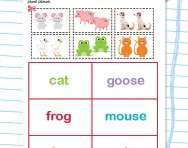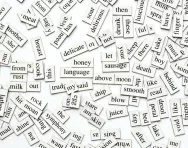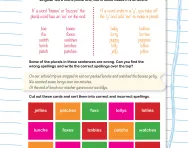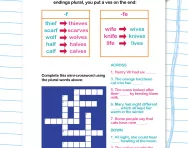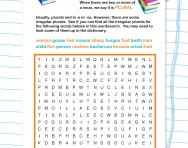Important update from TheSchoolRun
For the past 13 years, TheSchoolRun has been run by a small team of mums working from home, dedicated to providing quality educational resources to primary school parents. Unfortunately, rising supplier costs and falling revenue have made it impossible for us to continue operating, and we’ve had to make the difficult decision to close. The good news: We’ve arranged for another educational provider to take over many of our resources. These will be hosted on a new portal, where the content will be updated and expanded to support your child’s learning.
What this means for subscribers:
- Your subscription is still active, and for now, you can keep using the website as normal — just log in with your usual details to access all our articles and resources*.
- In a few months, all resources will move to the new portal. You’ll continue to have access there until your subscription ends. We’ll send you full details nearer the time.
- As a thank you for your support, we’ll also be sending you 16 primary school eBooks (worth £108.84) to download and keep.
A few changes to be aware of:
- The Learning Journey weekly email has ended, but your child’s plan will still be updated on your dashboard each Monday. Just log in to see the recommended worksheets.
- The 11+ weekly emails have now ended. We sent you all the remaining emails in the series at the end of March — please check your inbox (and spam folder) if you haven’t seen them. You can also follow the full programme here: 11+ Learning Journey.
If you have any questions, please contact us at [email protected]. Thank you for being part of our journey it’s been a privilege to support your family’s learning.
*If you need to reset your password, it will still work as usual. Please check your spam folder if the reset email doesn’t appear in your inbox.
What are singular and plural?
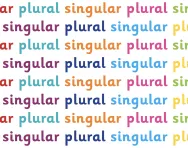
What are singular and plural?
A noun names an object, person or place.
When a noun is singular, it means there is one of them. When a noun is plural it means there is more than one.

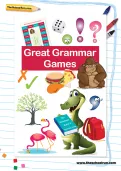
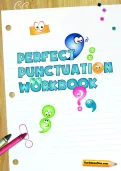
Download Fantastic FREE Grammar Resources!
- Perfect Punctuation Workbook
- Grammar Games Pack
- PLUS 100s of other grammar resources
'Dog', 'balloon' and 'table' are singular nouns because there is only one of each of them.
If these nouns were plural, it would mean there were more than one of them. An 's' would be added to the end of each word to make the words 'dogs', 'balloons' and 'tables'.
Forming plural nouns: the rules taught in primary school
To make most nouns plural we simply add -s.
There are exceptions, which children learn in primary school. The new curriculum does not stipulate when these words must be learnt, but most children are introduced to spelling irregular plural endings in Year 3 and Year 4.
1. If a noun ends in a 'y', to make the noun plural, the 'y' is removed and '-ies' is added:
'baby' becomes 'babies' and 'party' becomes 'parties'

2. If a noun ends in 'f' or 'fe', to make the noun plural the 'f' or 'fe' becomes 'ves':
'calf' becomes 'calves' and 'knife' becomes 'knives'
3. If a noun ends in s / ss / ch / sh / x then we add '-es' when we make it plural, for example:
bus - buses, kiss - kisses, church - churches, brush - brushes, fox - foxes
A useful way to remember this is that if the word "hisses" or "buzzes", the plural has an -es on the end.

Adding an apostrophe to a word does not make it plural: apple's does not mean more than one apple (that's apples)!
Possessive apostrophes for singular and plural nouns
Possessive apostrophes show that something belongs to someone or something.
When we write a sentence where something belongs to a singular thing or person, we use an apostrophe:
- To add a possessive apostrophe to a singular word that doesn't end in s we add 's.
- If a singular word ends in -ss we also add 's to add a possessive apostrophe (princess's room; boss's office).
Children learn how to use possessive apostrophes for singular words in Year 2.
If a number of nouns own something, we need to use a plural possessive apostrophe:
- If a plural word ends in s we show possession by adding an apostrophe adfter the s: the girls' books, the boys' bags
- If the plural word doesn't end in s we add 's: children's toys, women's clothes, men's shoes
Children learn how to use possessive apostrophes for plural words in Years 3 and 4.
How do teachers help children to learn about singular and plural?
Children will use their understanding of singular and plural in grammar and spelling lessons throughout primary school.
- A teacher may explain a particular rule (for example, y changing to ies). They may then ask children to look in a dictionary for more nouns ending in y and change them to their plural form.
- Teachers may incorporate spelling rules into their classroom displays so children have constant reference to them when they are writing.
- Children may be asked to use the Look Cover Write Check technique to help them learn certain spellings (where a child looks at a word, covers it over, writes it from memory, then checks it).
- Cutting and sticking activities can help to make spellings clear for children (for example, cutting out the word 'calf' then the ending 'ves', cutting the letter f off and then sticking the 'cal' and 'ves' together on a page).
- Children's spellings will be corrected in their writing and they are usually encouraged to write the correct spellings out several times to learn them.

